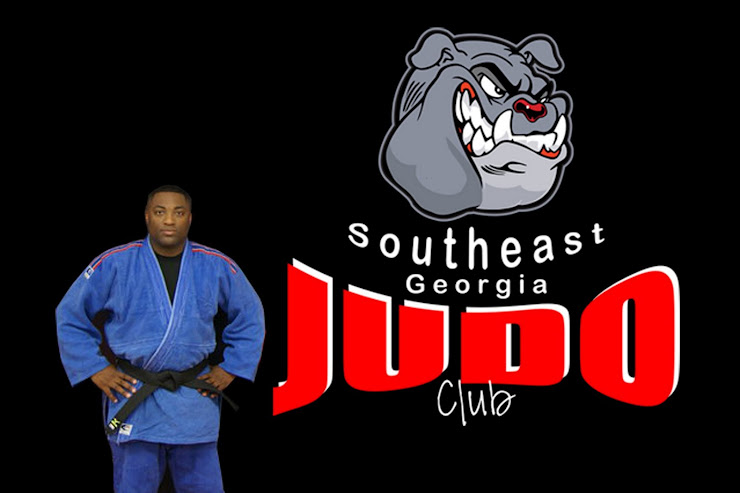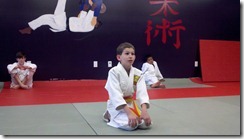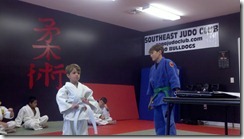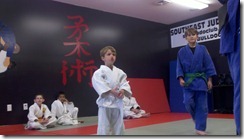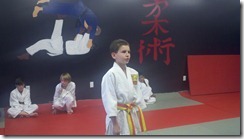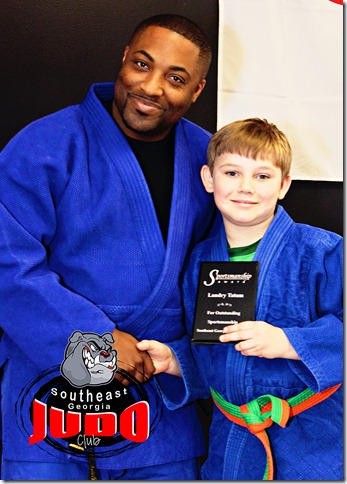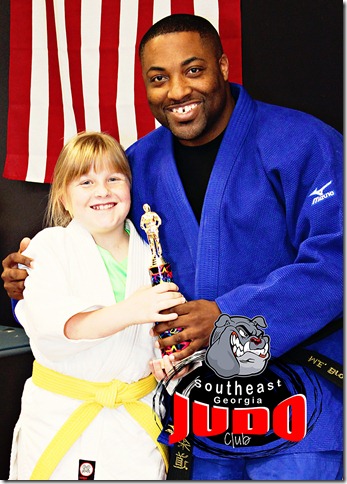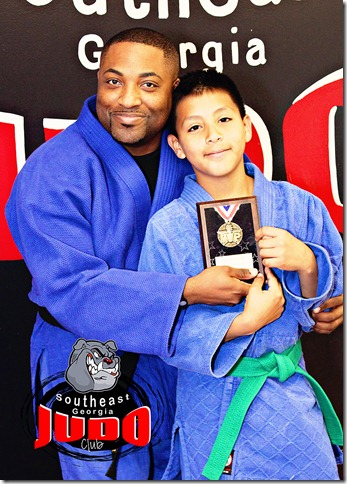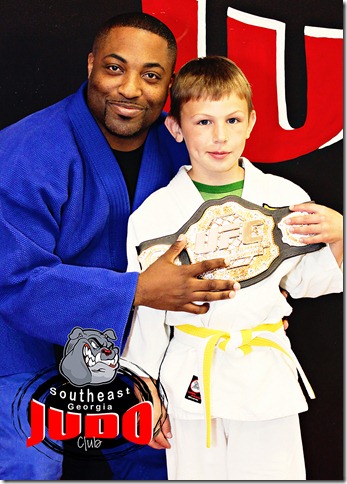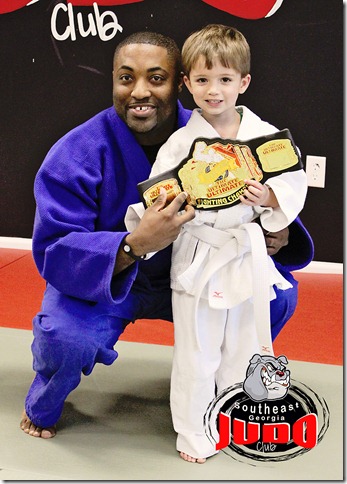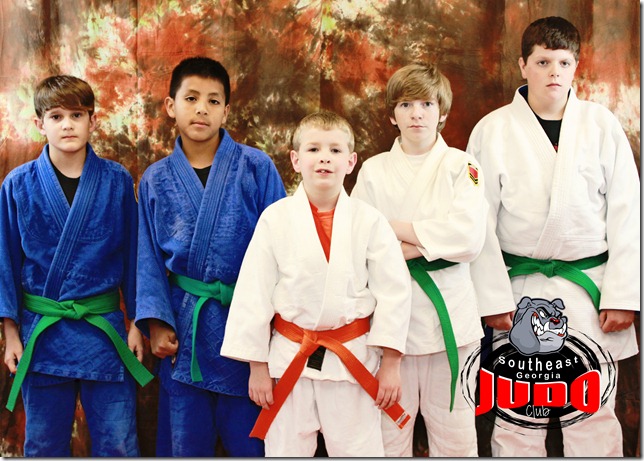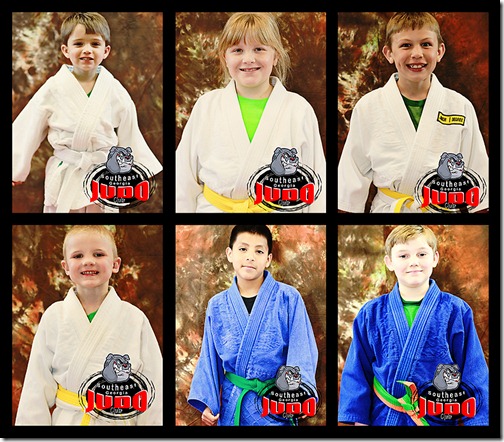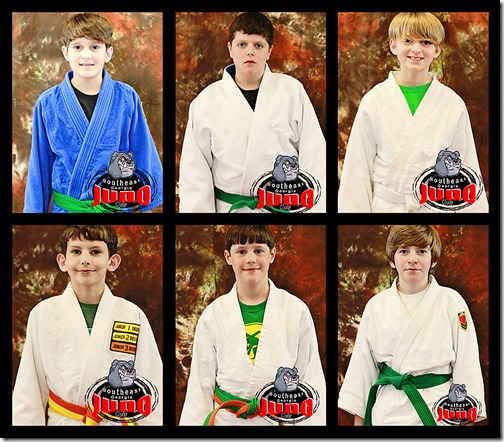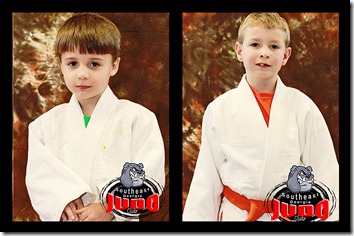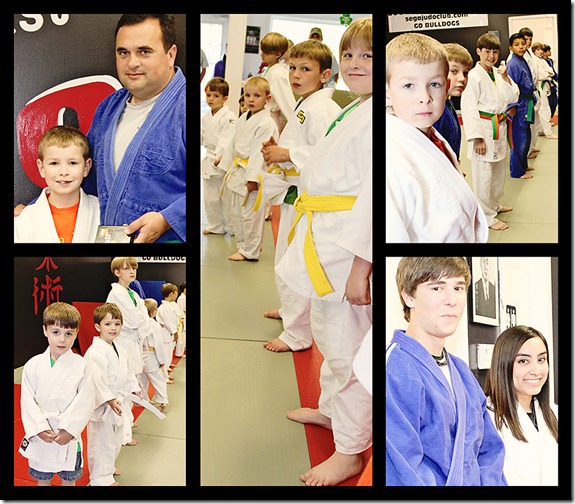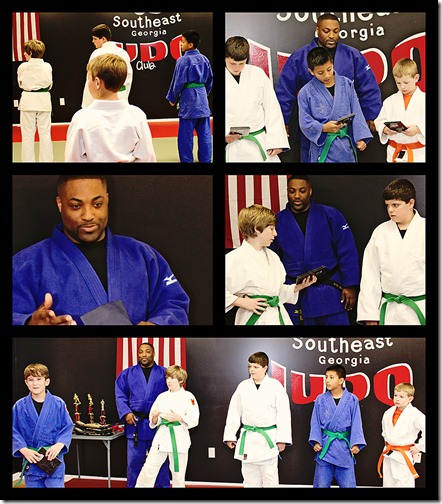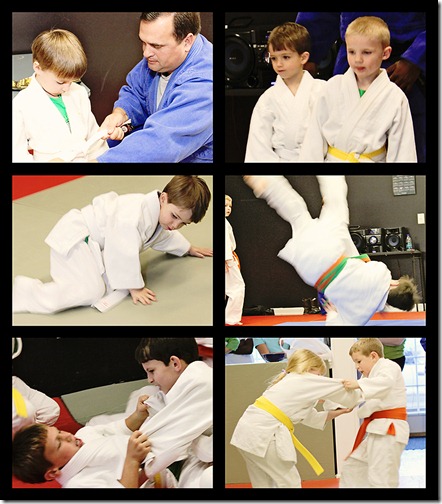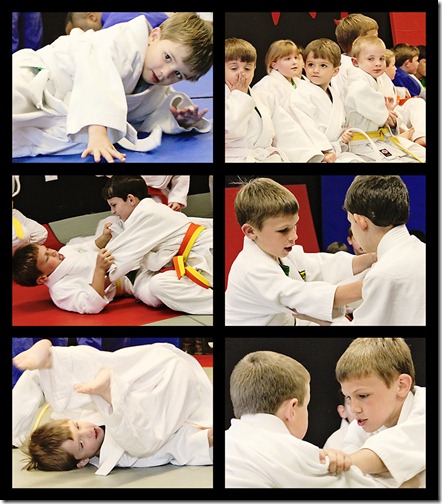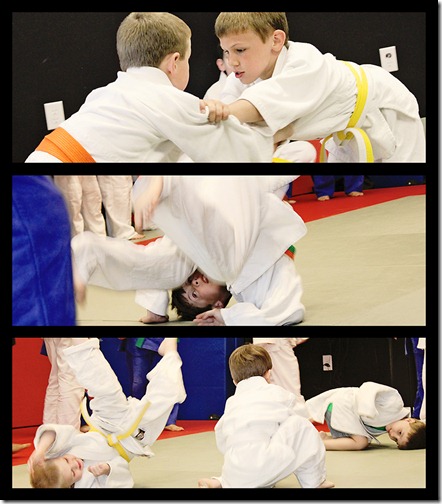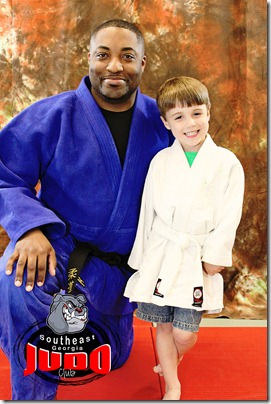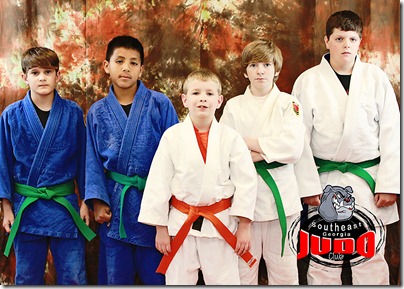Sunday, October 9, 2011
Saturday, September 17, 2011
Wednesday, September 7, 2011
98-year-old woman becomes first woman ever to earn Judo's highest-degree black belt

Just two years before her 100th birthday, Sensei Keiko Fukuda has become the first woman to achieve a tenth-degree black belt—the highest rank in the martial art and combat sport Judo. Fukuda is now one of only four living people who've earned the tenth-degree (ordan) black belt. To put the accomplishment into better perspective, throughout history, only sixteen people have ever achieved this honor.
Related: The good news about aging
Fukuda began practicing Judo in 1935 and is the sole surviving student of its founder, Kano Jiguro. At her teacher's urging, she learned English to help spread Judo internationally.
During a time when getting married, building a family, and becoming a housewife was the norm, Fukudo bucked tradition, opting out of marriage to pursue the martial art.
"All I did was Judo...this was my marriage," Fukudo reflected tearfully to the San Francisco Chronicle. "This is when my life destiny was set. I just never imagined how long this road would be."
She described the Jiguro’s school, known as the Kodokan, as "old-fashioned and sexist about belts and ranks." In fact, an edict that prevented women from achieving any higher than a fifth-degree black belt kept Fukuda at that level for thirty years. She was finally elevated to sixth dan in 1972 when a woman's division was created.
Fukodo said she approached Judo and her life with the intent to "be gentle, kind and beautiful, yet firm and strong, both mentally and physically." Fukuda says this kind of beauty is decidedly not external. "A compassionate soul is inner beauty," she explained to the paper. "I believe this is true beauty...All my life this has been my dream."
Dream realized, the 98-year-old Sensei Keiko Fukuda continues to teach Judo three times a week at a woman's dojo.
Wednesday, August 17, 2011
Monday, August 1, 2011
Monday, May 9, 2011
Thursday, March 31, 2011
Early Registration Now Available.
Greatest Judo Training Camp on Earth June 23-25 2011
Information and Registration
Camp 2011 is going to be at the Next Level Center !!!
4317 Stevens Mill RoadMatthews, NC 28104-4381
Our schedule is being updated with additional info when available.
Forms and Pre Registration Now Available
Online Pre-Registration2011 Registration Form
2011 Camp Discounts
There are 3 ways to register for Camp:
1) Online Pre-Registration, and Payment by Pay Pal
2) Registration for Camp by downloading the forms, mail them to us, or by Fax # 704-846-7530.
3) Register at Camp Wednesday afternoon the 23rd
during set up, & anytime during camp.
Camp Schedule 2011
Thursday, June 23rdClasses 9 AM - 5 PM & 6:30 PM - 8:00 PMFriday, June 24th
Classes 9 AM - 5 PM & 6:30 PM - 8 PMSaturday, June 25th
Classes 9 AM - 5 PM
Camp Fees include your Mid-Day and Evening meal.
(Continental Breakfast is included at the Comfort Inn at no additional charge.)
Camp Fees do not include your required membership to the USJA, USJI or USJF!
You may join USJA $45 / USJI $50 / USJF $50 at camp.
Mid-day meals will be catered at our Camp venue.
Camp fees also include your camp t-shirt.
Camp fees do not include your lodging expense
Saturday, March 26, 2011
Just a reminder...
19th Semi-Annual Ippon Open pre-registration closes on Monday, so if you plan on attending and want to save on registration, send it in now.
Ippon Judo
116 Palmetto Rd
STE G
Tryone, GA 30290
$25 for 1st
$15 for 2nd
$10 for 3rd, 4th, etc.
Friday, March 25, 2011
Congrats...
to Preston Lowe for his promotion to yellow belt...

Sunday, March 20, 2011
Student Awards
Landry Tatum - Sportsmanship Award
Shelby Pearce - Most Improved Player
Martin Marquez- MVP & Student of the Year
John McGillis - Student of the Year
Preston Lowe - Randori Champion
Banks Durrence - Randori Champion
Matthew, Martin, Landon, Jacob, Logan -
Bulldog Leadership Award
Saturday, March 19, 2011
Luis "Sucuri" Togno one of the best instructors I have ever learned from, he will be missed this year at camp.
Luis "Sucuri" Togno
 | Rest in Peace Sucuri. You may be gone, but you'll never be forgotten. Thanks for the lessons, friendship, and smile |
Friday, March 18, 2011
Saturday, March 5, 2011
What are the three biggest lies told in Judo?
- I haven't worked out in a while.
- Let's play light.
- Oops. I'm sorry.
Wednesday, March 2, 2011
19th Semi Annual Ippon Judo Open
Judo Open Registration (click to download)
Early registration is available for this tournament. Dave Wojcik must receive all forms by March 28, 2011. To be eligible for the discount, participants will need to :
- Complete tournament forms (other than weight)
- Sign the waiver
- Mailed all forms to Ippon Judo 116 Palmetto Road Suite G Tyrone, GA 30290
Discount as follows (early registration only):
- $25 for 1st division
- $40 for 2nd division
- $50 for 3rd division
Please note:
- Normal prices will be applied for all divisions at the door
- To help with the early registration process, it would be helpful to contact Dave to let him know when your paperwork is submitted to ensure he is watching out for it to arrive
- NO refunds will be given!
Please direct any questions to Dave Wojcik
- 770-486-5363
- ipponjudo@numail.org
Directions:
Monday, February 21, 2011
Wednesday, February 9, 2011
Monday, January 31, 2011
Tuesday, January 4, 2011
WAKA MU SHA JUDO SHIAI
Atlanta’s
WARREN/Holyfield BOYS AND GIRLS CLUB OF METRO ATLANTA
19TH ANNUAL WAKA MU SHA JUDO SHIAI
19TH ANNUAL WAKA MU SHA JUDO SHIAI
SANCTIONED BY: USA Judo
Eligibility: USJI, USJF and USJA
Eligibility: USJI, USJF and USJA
DATE: Saturday, February 12, 2011
LOCATION: NFL/Yet Boys & Girls Club of Metro Atlanta
535 Hill Street, SE, Atlanta, Georgia 30312
PH. (404) 524-8908
535 Hill Street, SE, Atlanta, Georgia 30312
PH. (404) 524-8908
More information:
Jujutsu Becomes Judo
Jujutsu Becomes Judo
by Jigoro Kano
 Most people are no doubt familiar with the words jujutsu and judo, but how many can distinguish between them? Here, I will explain the two terms and tell why judo came to take the place of jujutsu.
Most people are no doubt familiar with the words jujutsu and judo, but how many can distinguish between them? Here, I will explain the two terms and tell why judo came to take the place of jujutsu.Many martial arts were practiced in Japan during its feudal age: the use of the lance, archery, swordsmanship and many more. Jujutsu was one such art. Also called taijutsu and yawara, it was a system of attack that involved throwing, hitting, kicking, stabbing, slashing, choking, bending and twisting limbs, pinning an opponent, and defenses against these attacks. Although jujutsu's techniques were known from the earliest times, it was not until the latter half of the sixteenth century that jujutsu was practiced and taught systematically. During the Edo period (1603-1868,) it developed into a complex art taught by the masters of a number of schools. In my youth I studied jujutsu under many eminent masters. Their vast knowledge, the fruit of years of diligent research and rich experience, was of great value to me. At that time, each man presented his art as a collection of techniques. None perceived the guiding principle behind jujutsu. When I encountered differences in the teaching of techniques, I often found myself at a loss to know which was correct. This led me to look for an underlying principle in jujutsu, one that applied when one hit an opponent as well as when one threw him. After a thorough study of the subject, I discerned an a1l-pervasive principle: to make the most efficient use of mental and physical energy. With this principle in mind, I again reviewed all the methods of attack and defense I had learned, retaining only those that were in accordance with the principle. Those not in accord with it I rejected, and in their place I substituted techniques in which the principle was correctly applied. The resulting body of technique, which I named judo to distinguish it from its predecessor, is what is taught at the Kodokan.
The word jujutsu and judo are each written with two Chinese characters. The ju in both is the same and means "gentleness" or "giving way." The meaning of jutsu is "art, practice," and do means "principle" or "way," the Way being the concept of life itself. Jujutsu may be translated as "the gentle art," judo as "the Way of gentleness," with the implication of first giving way to ultimately gain victory. The Kodokan is, literally, "the school for studying the Way." As we shall see in the next chapter, judo is more than an art of attack and defense. It is a way of life.
To understand what is meant by gentleness or giving way, let us say a man is standing before me whose strength is ten, and that my own strength is but seven. If he pushes me as hard as he can, I am sure to be pushed back or knocked down, even if I resist with all my might. This is opposing strength with strength. But if instead of opposing him I give way to the extent he has pushed, withdrawing my body and maintaining my balance, my opponent will lose his balance. Weakened by his awkward position, he will be unable to use all his strength. It will have fallen to three. Because I retain my balance, my strength remains at seven. Now I am stronger than my opponent and can defeat him by using only half my strength, keeping the other half available for some other purpose. Even if you are stronger than your opponent, it is better first to give way. By doing so you conserve energy while exhausting your opponent.
This is but one example of how you can defeat an opponent by giving way. It was because so many techniques made use of this principle that the art was named jujutsu. Let us look at a few other examples of the feats that can be accomplished with jujutsu.
Suppose a man is standing before me. Like a log on end, he can be pushed off balance -- frontward or backward -- with a single finger. If at the moment he leans forward, I apply my arm to his back and quickly slip my hip in front of his, my hip becomes a fulcrum. To throw the man to the ground, even if he greatly outweighs me, all I need do is twist my hip slightly or pull on his arm or sleeve.
Let us say I attempt to break a man's balance to the front, but that he steps forward with one foot. I can still throw him easily by merely pressing the ball of my foot just below the Achilles' tendon of his advancing leg a split second before he places his full weight on that foot. This is a good example of the efficient use of energy. With only slight effort, I can defeat an opponent of considerable strength.
What if a man were to rush up and push me? If instead of pushing back, I were to take hold of his arms or his collar with both hands, place the ball of one foot against his lower abdomen, straighten my leg and sit back, I could make him somersault over my head.
Or suppose that my opponent leans forward a bit and pushes me with one hand. This puts him off balance. If I grab him by the upper sleeve of his outstretched arm, pivot so that my back is close to his chest, clamp my free hand on his shoulder and suddenly bend over, he will go flying over my head and land flat on his back.
As these examples show, for the purpose of throwing an opponent the principle of leverage is sometimes more important than giving way. Jujutsu also includes other forms of direct attack, such as hitting, kicking and choking. In this respect, the "art of giving way" does not convey the true meaning. If we accept jujutsu as the art or practice of making the most efficient use of mental and physical energy, then we can think of judo as the way, the principle, of doing this, and we arrive at a true definition.
In 1882 I founded the Kodokan to teach judo to others. Within a few years, the number of students rapidly increased. They came from all over Japan, many having left jujutsu masters to train with me. Eventually judo displaced jujutsu in Japan, and no one any longer speaks of jujutsu as a contemporary art in Japan, although the word has survived overseas.

Subscribe to:
Posts (Atom)
